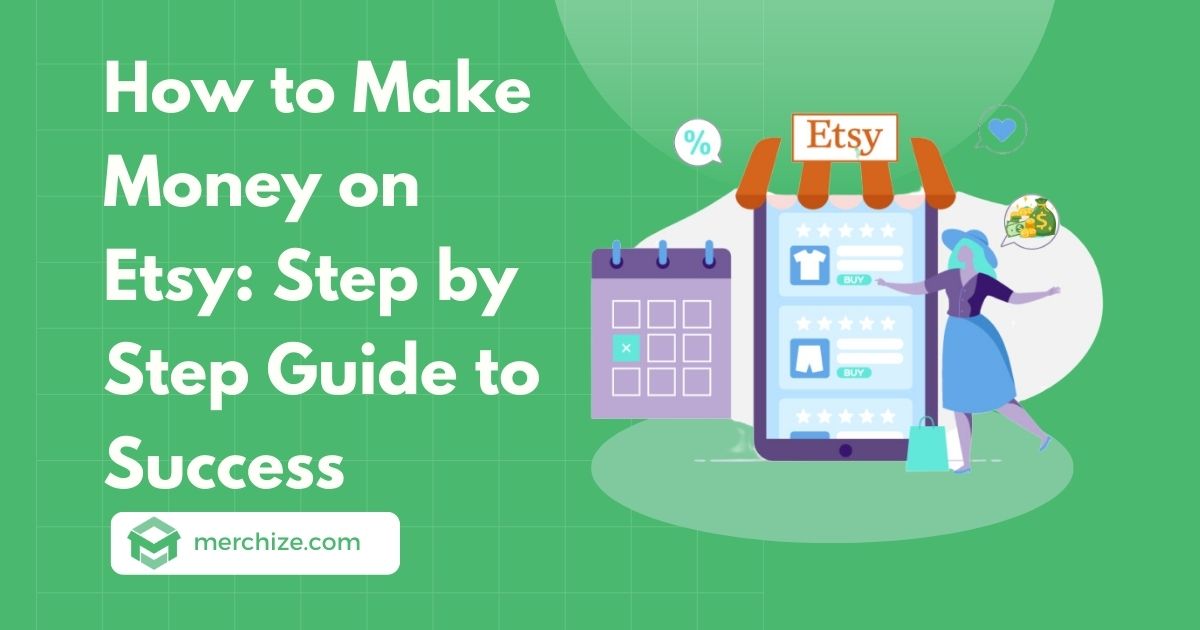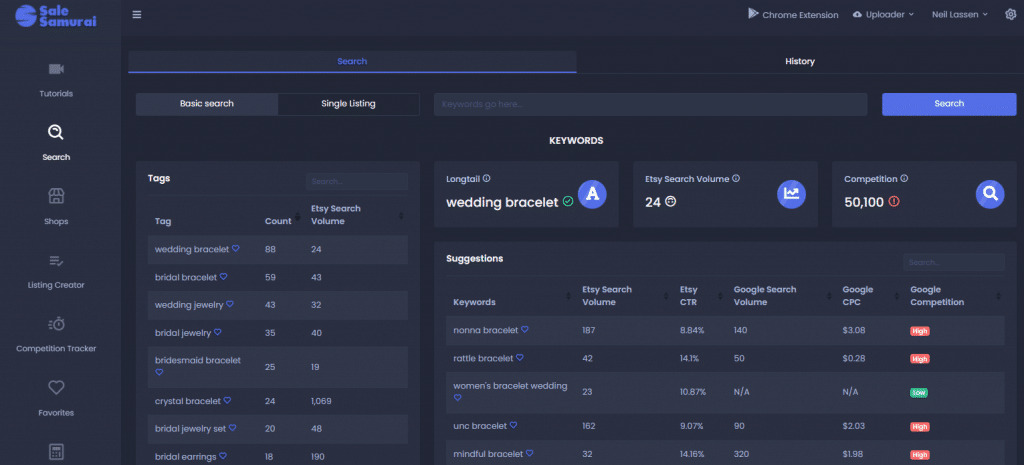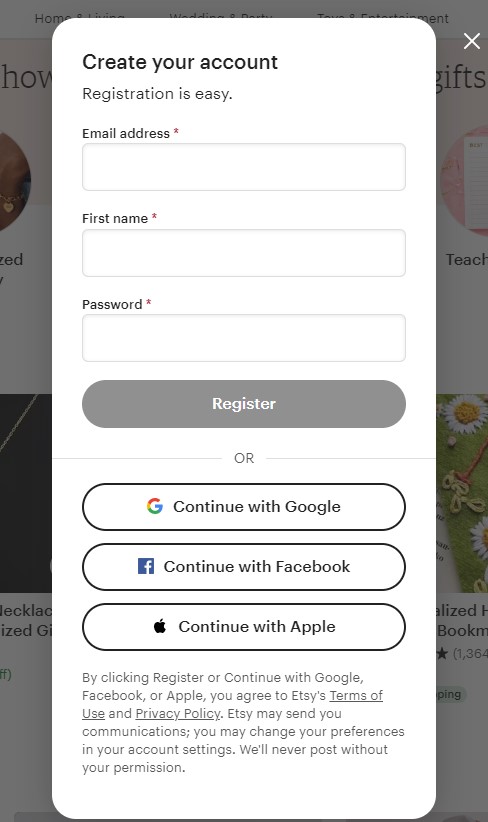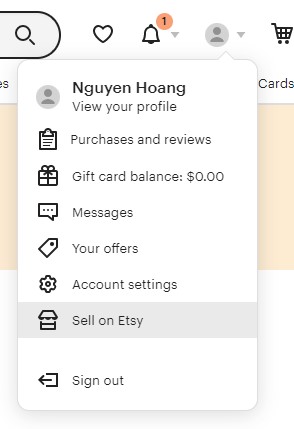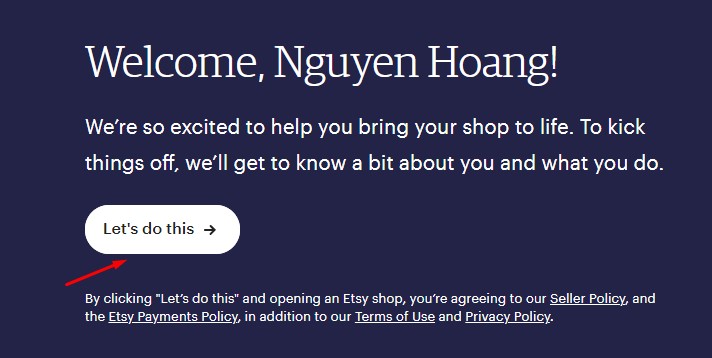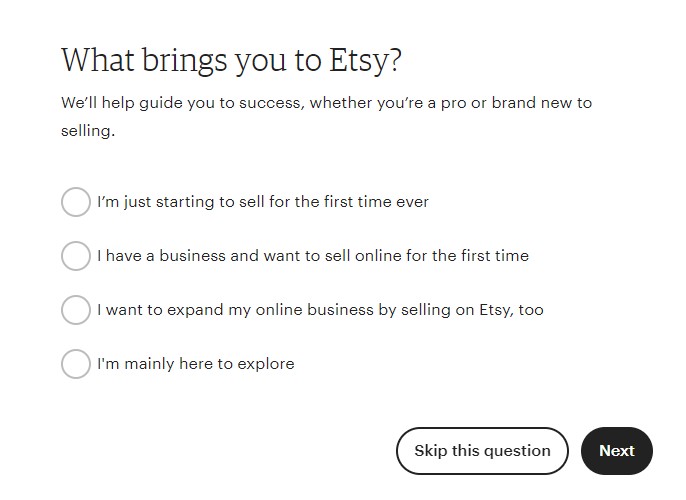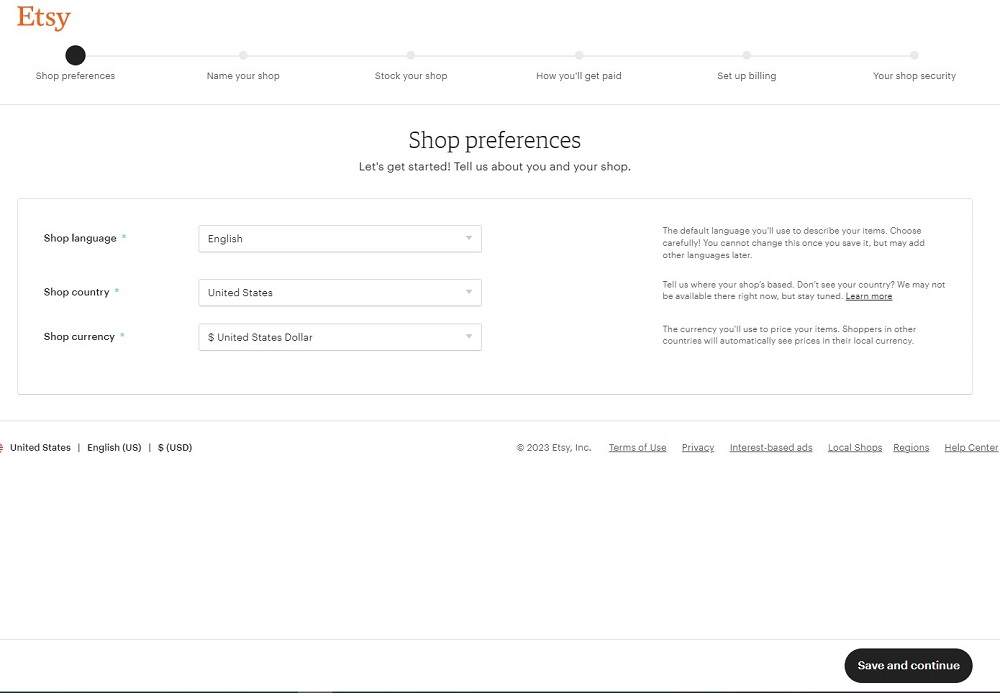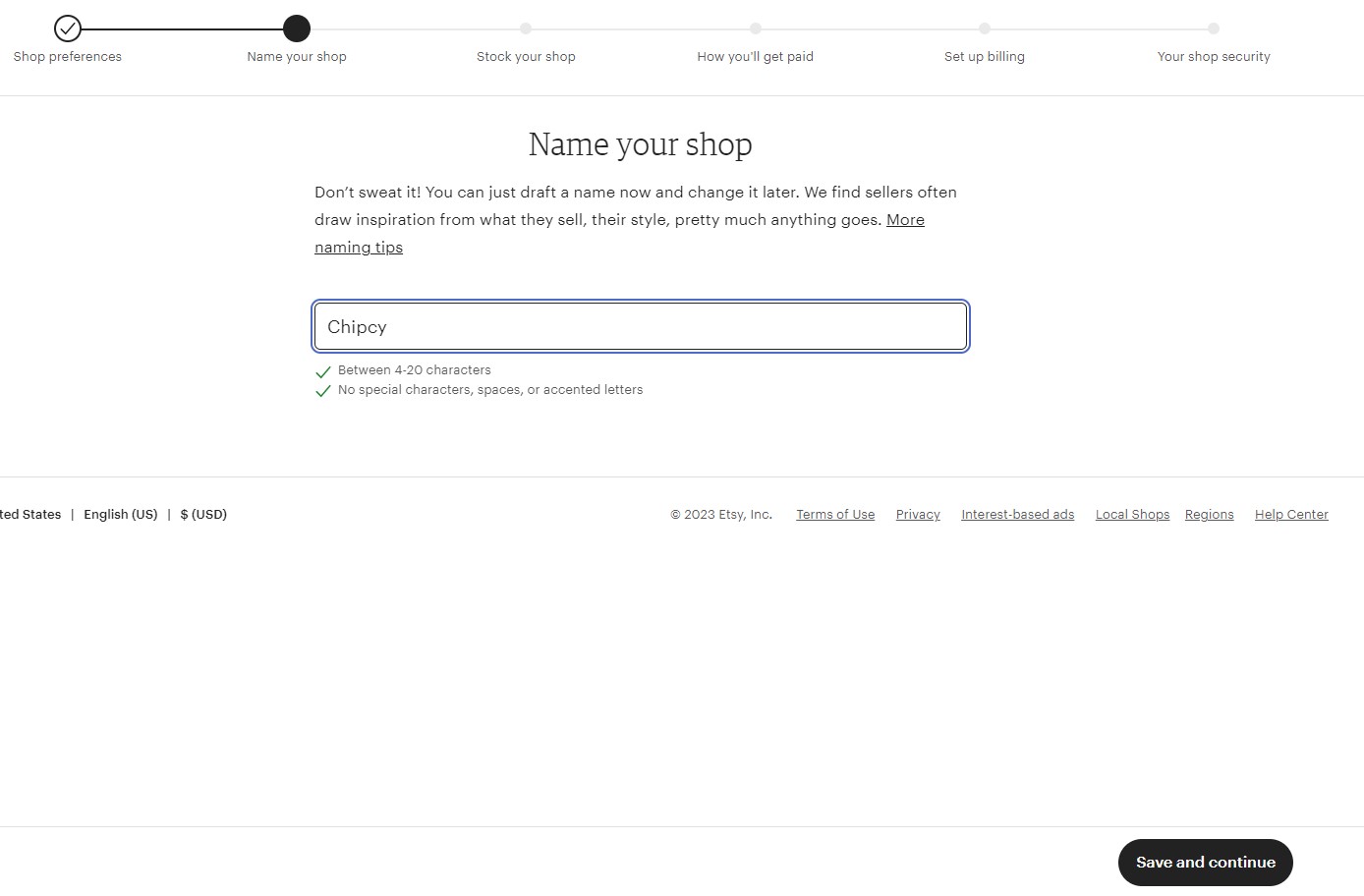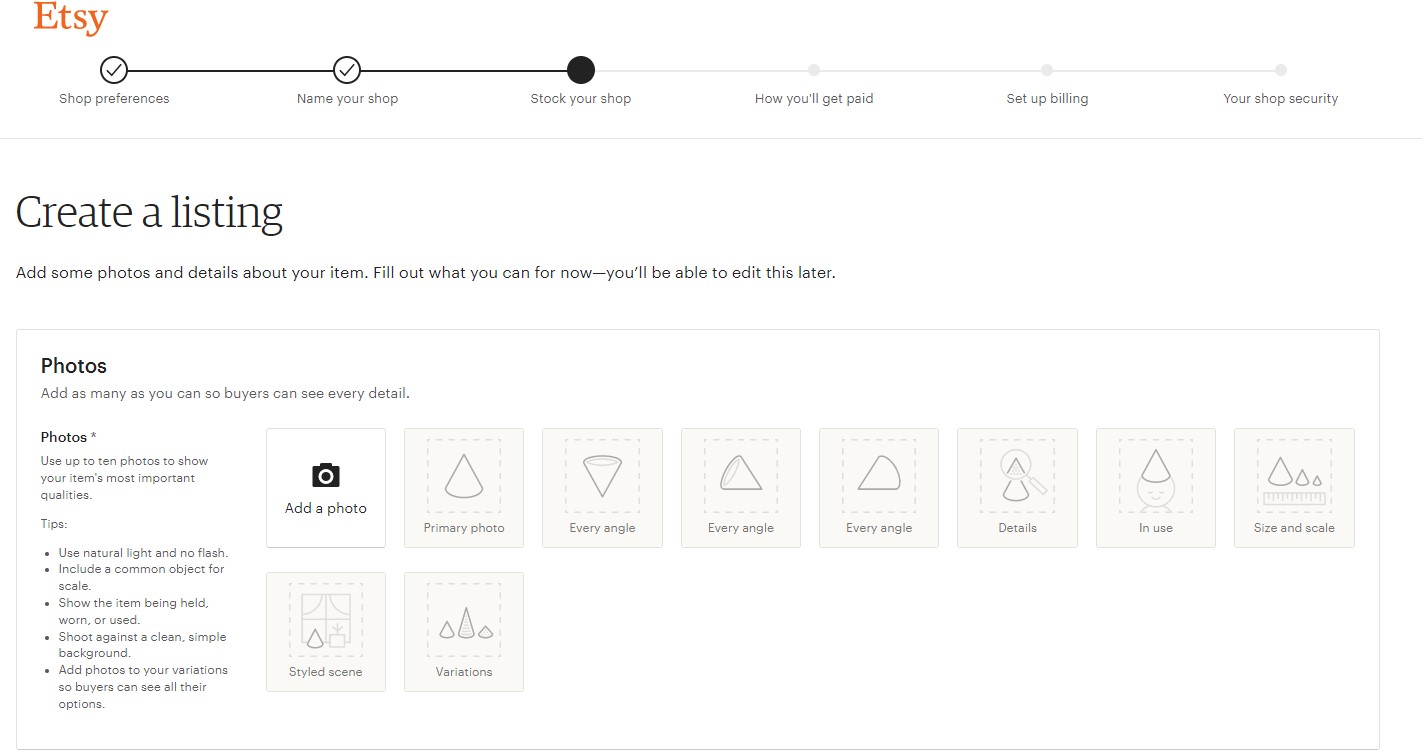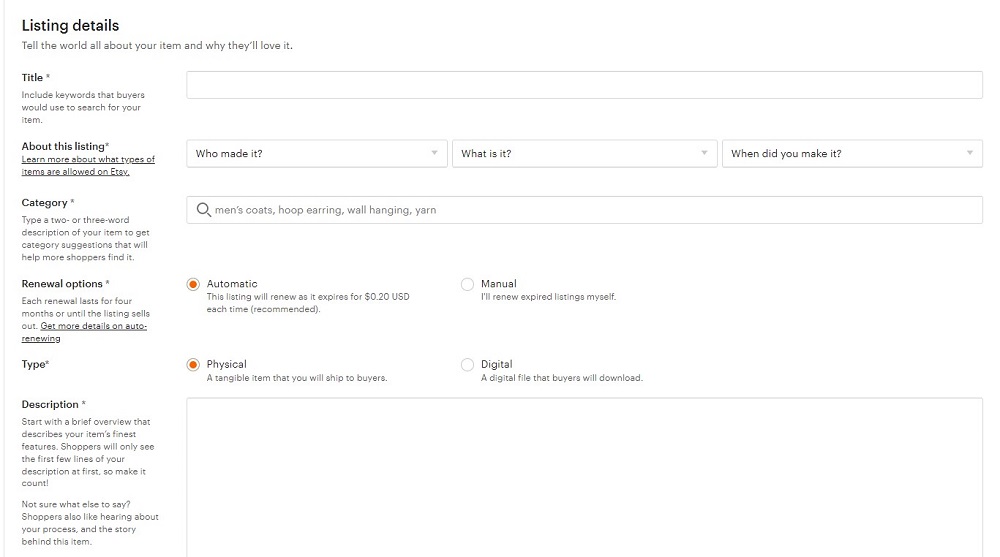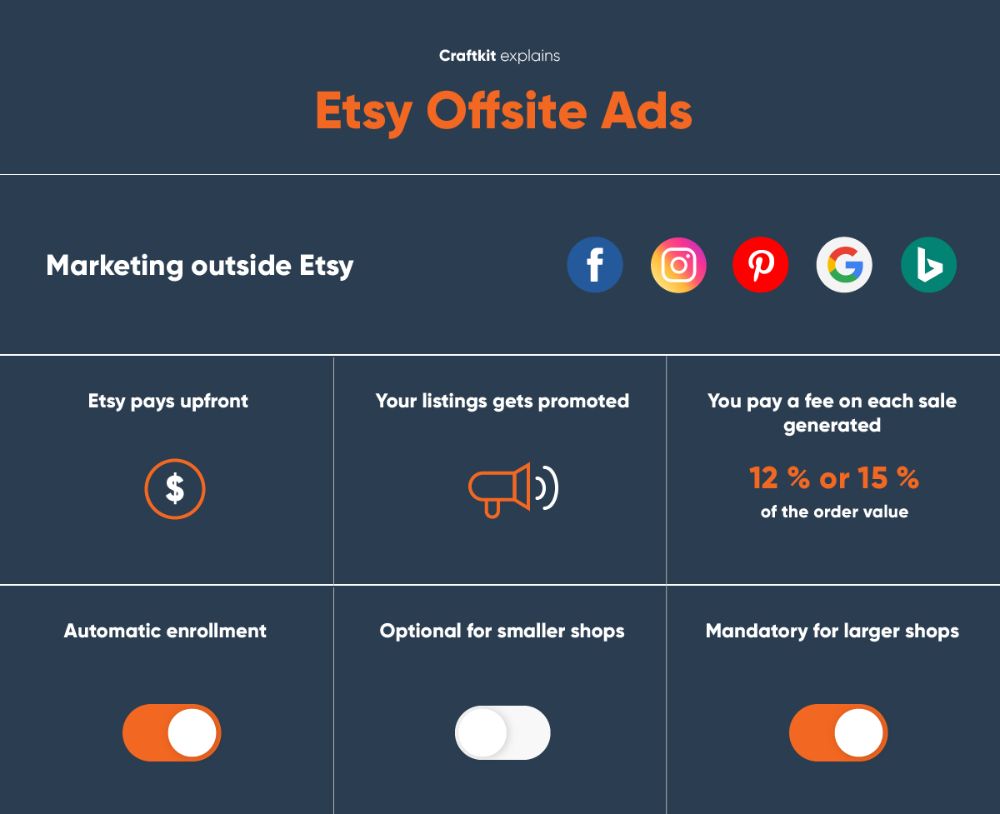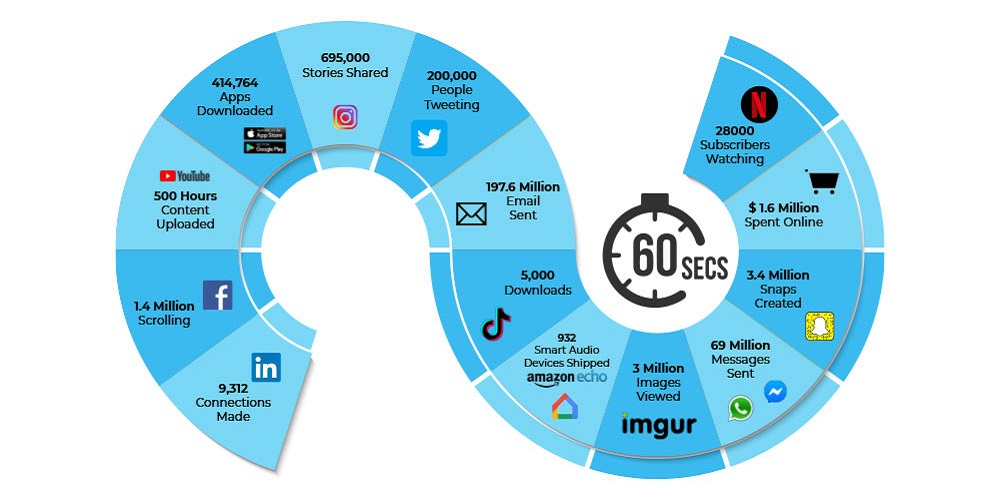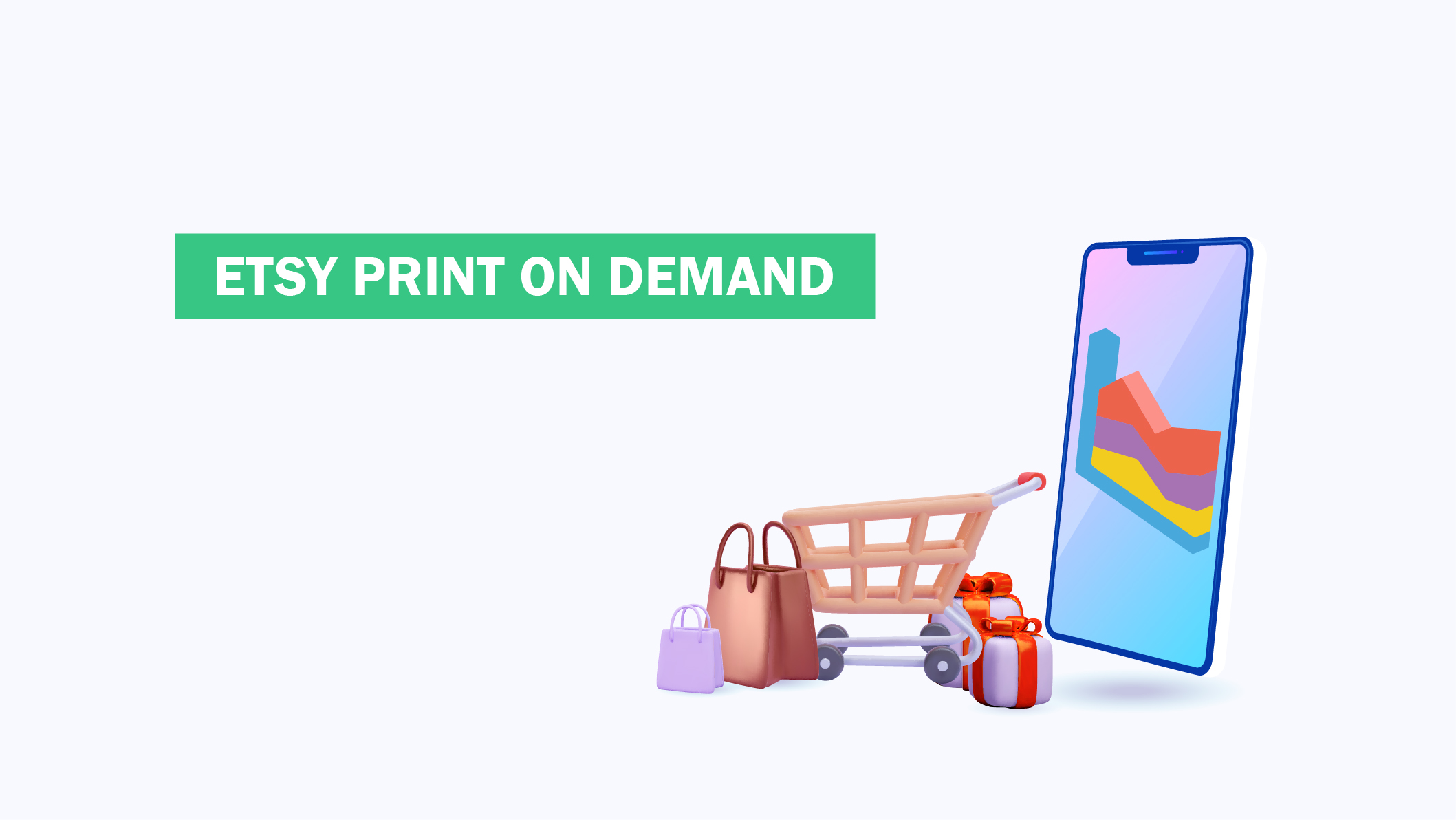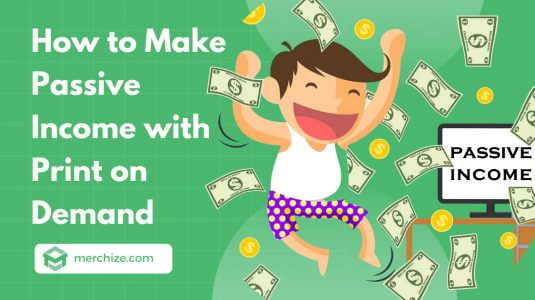Contents
Starting your Etsy shop can be an exciting way to make money from your creativity. With over 60 million active buyers and 7.5 million merchants vying for business, simply creating an Etsy store guarantees no immediate success. In this step-by-step guide, we’ll show you how to pick a product you love, set up your Etsy store, and start making sales. Whether you’re great at crafting, painting, or designing digital products, Etsy is the perfect place to turn your passion into profit.
How to Make money on Etsy step-by-step-guide
By following these step-by-step instructions, you can set up your Etsy shop and start making money:
Step 1: Find A Niche On Etsy
Your Etsy journey begins with a critical first step: finding your niche. Why is it so important? Your niche not only lays the foundation for your Etsy shop, but it also heavily influences its eventual success. A well-defined niche allows you to create products for the right customer, leading to better conversions and happier customers.
Assess Your Strengths and Skills
To get started finding a niche on Etsy, take a moment to evaluate your skills and strengths. Think about the areas where you excel and which skillset could translate into a product you could sell on Etsy. This is not an area where you need to be highly creative or pack exceptional skills. Just being passionate about a product that can be sold online is going to be enough. For example, if you have a knack for creating workout routines or just delivering great advice on working out, you could partner with someone who can create workout templates and immediately establish a profitable niche.
Utilize Keyword Research Tools
If you’re unsure about your skills or interests, consider using data to guide your decision — rather than jumping on the latest fad like, ahem, covfefe. Sale Samurai, for example, provides detailed Etsy keyword data derived from actual customer searches, letting you bypass the guesswork when it comes to which products will sell. In addition to keyword data, Sale Samurai shows you how much your competitors are charging for similar products, average shipping time and views per product. This is key to deciding which products to feature in your shop.
As with any business, those who are first to market tend to do the best. Using a keyword research tool like Sale Samurai is critical to help you find low-competition niches with a decent search volume, that aren’t yet overrun by sellers.
Use Sale Samurai’s Search Tool To Establish A Winning Etsy Keywords
Conduct Competitor Analysis
Conduct competitor analysis by inspecting top-selling shops and sellers in the areas you’re interested in on Etsy. This analysis will help you understand if there’s room for you in that niche and how to price your items for profitability. If the niche is too oversaturated, for instance, or the average price point is too low to permit you to make a profit, then you might want to consider other options.
Stay Updated on Trends and Demands
Keep an eye out for current trends, as well as problems people face and the solutions or items they seek out to address them. For example, as virtual meetings starting to become more prominent, people started looking for unique virtual backgrounds to use, so sellers that found this niche early on likely made a significant profit. You can use tools such as Google Trends to stay up to date on relevant trends.
Create Original and Unique Products
Some successful niches on Etsy include handmade jewelry, personalized notebooks, and baby clothes. For example, if you’re good at drawing, you could sell custom illustrations or art prints. If you are particularly skilled or have a specific skill, such as watercolor painting, check to see if there’s a demand for personalized items or designs in that style. For example, a friend of mine began selling watercolor paintings of a first-time parents’ ultrasound scans. It’s both unique and relatively untapped.
Refer to 7 Etsy Success Stories about Print on Demand to help you have more faith in your Etsy earning journey
Step 2: Sign up on Etsy and create your shop
With a niche in hand, it’s time to create an account on Etsy and set up your shop. Follow these steps to get started:
Sign up for an Etsy account: Click “Sign in" at the upper right corner after vist Etsy homepage, and then click “Register“. Fill in your email address, name, and password, or sign up using your Google, Facebook, or Apple account. Confirm your email address when you receive the confirmation email from Etsy.
- Create a shop: After signing in to your Etsy account, select “Sell on Etsy" from the “Your account" menu in the top right corner. You will be taken to a page with details on opening an Etsy shop, tools, fees, and frequently asked questions.
- Click “Get Started" or “Open Your Etsy Shop" if you’re scrolling down.
- Click the “Let’s do this" button on the next screen:
- Agree to Etsy’s policies and Terms of Use: During the store creation process, you will be asked to confirm your agreement to Etsy’s rules and Terms of Use. Additionally, you could be asked to respond to certain optional questions. The following questions can be answered or skipped
- Then click “Start your shop“
- Adjust your Etsy shop preferences: Choose your shop’s default language, nation, and currency under the “Preferences" tab. Then click “save and continue”
- Name your Etsy store: You are allowed up to 20 characters in your Etsy shop name. Ideally, it should state what products your shop will sell and represent your brand. Including a focus keyword is recommended for better SEO. Use a shop name generator like Namelix to generate ideas, and make sure to check if the name is available on social media and domain registration websites like GoDaddy.
Step 3: Prepare your shop and products
Add your designs
You can start by crafting a single design and then expand your store’s offerings later on. If you plan to incorporate designs from print-on-demand services like Merchize or Printify, you can establish one product now and add the print-on-demand designs after connecting with the platform.
Once your store is set up, begin adding your designs, ensuring that you utilize high-quality images and provide comprehensive descriptions for each design.
To launch your first product directly on Etsy, there are several mandatory fields to complete:
- Upload a minimum of one product image (multiple images are preferred)
Create a title for your t-shirt - Compose a description for your t-shirt (specify the shirt type you are printing on)
- Sizing (generate sizes and establish pricing for each size using a new Variation)
Shipping cost (e.g., $3.99 shipping via USPS) - Processing time (e.g., 3-5 days, depending on your process)
- Tags (optional, but they function like keywords to enhance your SEO)
After completing these steps, save your first product and proceed to the next phase.
Keep in mind that if you plan to use print-on-demand services like Printify or Printful, we will cover setting up the connection later in this article, allowing you to create products directly from the print-on-demand platform.
In the example provided, a straightforward design was created using Canva.com. The mockup image was saved directly from Canva and used as the initial product image.
Now that you’ve set up your Etsy account and created your shop, you’re ready to start selling! As you grow your business, remember to keep an eye on trends and demands in your niche and continuously optimize your shop for better results.
Create an engaging listing title
Titles hold significant importance. Aim for specificity to ensure your product appears in relevant searches. For instance, if you’re adding a new Star Wars-themed mask listing to your shop, don’t simply title it “Star Wars Mask." Instead, use specific keywords that potential buyers might search for, like “Star Wars Movie Quote – Novelty Humor Face Mask." While it may sound quirky, it will appear in more search results.
Choose an appropriate category
Next, select the category in which your items will be displayed. Experiment with different search terms until you find the right fit. Consider where potential customers would look and what they might search for when seeking your product. After choosing a category, additional questions will auto-populate to help you better categorize your item. Fill in as many as possible.
Craft a compelling description
Now, it’s time to write a product description for your item. Share the story behind the creation and the materials used.
Consider what information you would want to know if you were purchasing the product. Be specific, as this can also help your item appear in search results.
Utilize relevant tags
To improve search visibility, add tags and materials to your listing. Tags serve as search keywords for your product. For example, if you were tagging your Star Wars mask, you might choose “Star Wars," “movies," “face mask," “cotton mask," “movie mask," “Jedi," etc. You have a limit of 13 tags, so choose wisely!
Determine your price
Next, set the price and quantity for your item. This section is rather straightforward. Base your pricing on the time and supplies involved, and research similar items for reference. Remember, you can always run a sale or offer discounts later.
EXPERT TIP: In the “quantity" section, you can list as many items as you want. You will only be charged the $0.20 listing fee when the listing is active and when it renews after a sale — not based on the total quantity of items listed!
Incorporate variations (if applicable)
After setting the price and quantity, you will encounter the “Variations" section. Use this option if your item is available in different colors, shapes, or features. For instance, you could create a variation for each color of your masks. This will be displayed on the product page as a drop-down menu. If you sell framed art, you might create variations for the hanging hardware or frame color.
Step 4: Optimize your shop and products
To increase your Etsy shop revenue and ensure long-term success, give careful attention to details when preparing your shop and products. Attention to detail helps you attract and retain customers and increase sales. Follow these detailed steps to effectively prepare your shop:
Carefully select products and craft unique designs
To start, you’ll create the products you want to sell on Etsy based on your chosen niche and target audience. If you’re partnering with a print-on-demand service like Merchize, then you’ll have the ability to white-label a never-ending range of products to put your own unique spin on. If you don’t want to invest a lot of money upfront, you can start with digital products like printable art or partner with a print-on-demand service like Merchize to create custom clothing and accessories without needing inventory and be sure that your designs are high-quality and a perfect fit for your target market.
Orange t-shirt with black ink best t-shirt colors
Thoroughly analyze the costs
To achieve the best possible profit margins and efficiently manage your personal finances, it’s vital to calculate all expenses and fees associated with selling on Etsy. Consider the following costs when determining your prices:
- Production costs
- Listing fees
- Transaction fees
- Payment processing fees
- Shipping costs
By accounting for these expenses, you can set prices that allow you to maintain a profitable business.
Use engaging and informative descriptions
Describe the details of the product Offer accurate and detailed information about the product in the description. These details should include its unique features, what it’s made from, included accessories, central themes, significant dimensions and any unique attributes that set it apart from others which are similar. The more details you offer, what’s the better your customers will understand the product and what it is about.
Clearly outline shipping rates and options
Shipping rates and alternatives are to be made clear Be sure to relay important information such as shipping rates to Canada or other parts of the landing page, along with shipping options, e.g., “Ships from Canada”. Likewise, it’s good idea to add shipping time-frames. This way customer expectations can be managed. This helps stop any disappointment or confusion later on.
Create an engaging and user-friendly store page
After you have set up your Etsy shop, what should you do next?
Add a shop name that’s uniquely you and reflects your niche. Include a clear and compelling shop announcement that explains what you sell and includes your story or anything relevant about your business. Make your shop easy to navigate — including a search bar, product categories and an “About Us” page where you can share more about yourself to build credibility.
Optimize product listings for maximum impact
Craft compelling product listings with Professional & captivating images, thoughtfully written descriptions, strategic keywords to help your products get found in search, and a great product title that makes someone want to click.
Seamlessly integrate your store with a print-on-demand service
If you are using any of Merchize’s print-on-demand services, you can connect your Etsy store to your Merchize account for simple integrations and no-fuss product listings! Doing so ensures all orders are automatically fulfilled and shipped directly to your customer without any hassle from you. This ensures the entire process is streamlined and takes up as little of your time as possible.
Study successful shops
First, observe other successful Etsy shops! It doesn’t matter if it’s a direct competitor or a shop that sells a completely different product. Watch how they form their product listings (titles, descriptions, and images), how they present their shop, etc. and gain valuable insights.
If you have prepared and followed all the other steps sizably, you should be ready to start attracting customers to your shop and your products. After that—I would say you’re in the clear—but take it from me (someone four years into my journey as a maker)—you’re never in the clear. Keep your nose to the grindstone, keep learning, keep watching others, and keep giving 110% in everything you do. You will be great!
Step 5: Promote your Etsy products effectively
To increase your visibility and sales on Etsy, it’s essential to promote your products both on and off the platform. By understanding Etsy’s search algorithm and implementing effective promotion Etsy shop strategies, you can drive more traffic to your store and boost sales.
1. Etsy Ads campaigns
You may increase your audience and promote your products in Etsy search results by using Etsy Ads. Etsy will take care of the rest; just decide on your advertising budget and which listings to promote. They can assist you decide where and when to display your advertising on Etsy to get the best exposure for your money by utilizing Etsy’s data insights and experience.
To set up Etsy Ads, go to your Shop Manager and click on Marketing > Advertising > Etsy Ads.
2. Offsite ads
Throughout the internet, including in search engine results and on social media sites like Facebook, Etsy promotes its listings. You won’t have to pay anything up front for this service from Etsy. An advertisement cost is only due when a sale is completed.
It’s possible that these advertising will contain your listings. Depending on their discretion, Etsy might automatically promote your listings with their affiliates.
Depending on how much money you made on Etsy in the previous year, off-site ads might not be necessary for your shop. If you’re a new seller, this service is optional.
To learn more about Offsite Ads, go to Marketing > Advertising > Offsite Ads in your Shop Manager.
3. Social media
Social media presents a valuable opportunity for Etsy shop owners to expand their reach and drive more sales. Platforms like Pinterest and Instagram allow you to showcase products to targeted audiences who may not find you otherwise.
But where should you focus your social media efforts? And what type of content should you share to effectively promote your Etsy shop? Here are some key tips:
Choose Platforms Where Your Audience is Active
Research where your target customer demographic spends time online. For example, Pinterest tends to over-index with female audiences interested in crafts, DIY, and shopping. Lean into platforms where you can organically intersect with those most likely to buy from your shop.
Create Visually Compelling Content
Both Pinterest and Instagram rely heavily on eye-catching visuals and high-quality photography. Ensure your product images and lifestyle shots inspire potential customers. Consider consistent editing for branding cohesion across platforms.
Share Your Process and Story
Offer value beyond just product posts. Give customers a glimpse into your creative process through behind-the-scenes images and videos. Share what inspires your designs. Ultimately you are selling a piece of your artistic journey.
Promote Customer Styling and Engagement
Encourage customers to tag you in their own social content showcasing your products. Rely on user generated content to demonstrate real-life uses and styling. This also nurtures community around your brand.
Measure What Performs Best
Pay attention to metrics like engagement, clicks and conversions to identify what content resonates most. Let data guide your strategy – double down on what works and tailor future posts accordingly.
Consistency and patience are key – focus on providing lasting value vs quick sales. In time, an authentic social media presence will amplify your Etsy reach and loyalty.
4. SEO
As an Etsy seller, nailing your SEO strategy is the difference between products gathering digital dust and reaching buyers excitedly seeking your skillful creations. It’s all about positioning your listings to be seen and adored.
Think of Etsy’s search engine as a matchmaker of sorts. It’s on a quest to pair shoppers with the perfect items for their search. But with millions of listings, standing out ain’t easy. You need an SEO game plan as finely tuned as your craftsmanship.
Think like a customer. What words would you use to search for your product? For example, if you sell handmade baby clothes, use keywords like ‘custom baby onesie’ or ‘organic baby clothing’ in your product title and description to make it easier for customers to find. Get those keywords down pat using tools like Marmalead and eRank. With the right phrases, your listings can show up for the right buyers at the right time.
But choosing keywords is just the first half of the tango. Next, you’ll want to organically incorporate them throughout your product titles, tags, and descriptions in a natural, readable way. Don’t just stuff them in like literary sausages – let them flow like poetry.
Now it’s time to let your work shimmer and dazzle with professional-grade product photos and video clips. Subpar snaps and blurry footage simply won’t cut it. You’ve poured your heart into these items – make sure that passion pops off the screen.
Behind the scenes, pay close attention to nitty-gritty details like shipping costs, return policies, and customer service. Etsy wants to see you treating shoppers like royalty. Answer every message promptly, include personal touches like handwritten notes, and inspire rave reviews that boost your ranking cred.
At the end of the day, rising above the Etsy masses demands a mix of smarts, heart, and good ol’ fashioned hard work. But coding your SEO juuuust right and serving up five-star customer experiences? That’s how you attract raving fans and build a thriving online biz.
Step 6: Analyze, adjust, hustle
As an Etsy seller, you live and breathe by three simple words: analyze, adjust, hustle. It’s a never-ending cycle of examining your data, fine-tuning your approach, and putting in the hard work to stand out from the crowd. But that’s what it takes to turn your creative passion into a profitable business.
Start With the Data
The first step is gathering all the insights you can about your shop’s performance. Tools like Etsy Stats give you a goldmine of data – number of visits, click-throughs, orders, and more. Study it like a hawk studying its prey. Which listings are your MVPs? Which ones are floundering? This intel is your guide to figuring out what works and what needs some TLC.
Optimize for Success
With your data as your compass, it’s time to optimize those listings for maximum visibility and shopper appeal. Nail the product photography with drool-worthy images that showcase your craftsmanship. Write descriptions so compelling, customers will be renewing their Prime membership for those free 2-day shipping fees. And design a storefront that’s the digital equivalent of a shiny big-city boutique window display.
If writing Product Description Poetry isn’t your forte, consider partnering with an optimization whiz like Merchize. They’ll hook you up with pro photos and lit descriptions that will have shoppers hitting “Add to Cart" like it’s an Olympic sport.
But Don’t Stop There
Here’s the kicker – optimization is never a one-and-done deal. You’ve got to constantly monitor the latest trends, customer wants and don’t wants, feedback, and more. Staying agile and continually tweaking is the only way to ensure your Etsy shop keeps climbing up the rankings and your profits keep ascending right along with it.
So analyze those metrics like a data scientist on a bender. Adjust your approach with the relentless spirit of a Navy Seal. And hustle harder than a Brooklyn showtime dancer. Because that’s what it takes to be an Etsy heavy hitter. It’s a grind, but for those who live it, there’s no other way.
Best-selling product categories on Etsy
So you want to start an Etsy shop but have no clue what to sell? Girl, the world is your oyster on that platform! Etsy is an eccentric emporium where just about anything goes – vintage treasures, handcrafted goodies, offbeat artwork…you name it.
- Jewelry: From handmade creations to custom jewelry boxes and supplies, this category appeals to those who love unique designs and wallet-friendly prices. Personalized and one-of-a-kind pieces make for popular choices.
- Crafts and Supplies: DIY enthusiasts are constantly searching for supplies to create handmade goods and crafts. Beads, gems, stickers, hooks, and other crafting essentials are in high demand on Etsy.
- Wedding and Party Supplies: Customizable decorations, invitations, greeting cards, and more make this category popular among customers planning weddings, parties, and other celebrations.
- Clothing and Textiles: Etsy is a great platform to sell a wide range of clothing and textile items, from t-shirts and hoodies to socks, vintage clothing, and upcycled apparel. Custom designs and personalization are particularly sought-after.
- Personalized Items: Custom notebooks, journals, and other personalized products appeal to creative customers and make great gifts for various occasions.
- Homeware and Home Decor: Handmade and custom home accessories, such as pillows, canvas, candles, and more, help customers personalize their living spaces and showcase their unique styles.
- Art and Collectibles: Etsy is an ideal platform for artists to sell their work, ranging from digital downloads and canvas paintings to posters and other collectibles. High-quality photographs and detailed listings are essential for success in this category.
- Handmade Cosmetics and Spa Products: Natural and handmade skincare and beauty products are popular among Etsy customers who value unique and eco-friendly options.
- Wedding Items: Bridal and wedding party apparel, accessories, and decor are in high demand, allowing customers to customize their special day and create memorable experiences.
- Baby Items: Clothing, blankets, changing pads, furniture, and other essentials for newborns make this category popular among expecting parents and gift-givers.
- Kitchen Supplies: Custom cutting boards, aprons, utensils, spice bottles, glassware, and other kitchen decor items are popular choices for food enthusiasts and home cooks.
- Pet Supplies: Custom products for pets, including beds, bowls, and fashion accessories, cater to pet owners who want to spoil their furry or scaly friends.
- Shoes: Footwear is an evergreen category on Etsy, with custom designs and various styles available for every taste, season, and occasion.
- Toys and Entertainment: Games, puzzles, sports equipment, and other entertainment items make this category popular for people of all ages.
- Electronics and Accessories: Phone chargers, car accessories, watch bands, mouse pads, tablets, and more can be sold on Etsy as a profitable side hustle.
- Vintage Items: Vintage accessories, clothing, jewelry, furniture, carpets, postcards, art, and other items at least 20 years old can be sold on Etsy, appealing to vintage enthusiasts and collectors.
Kickstart your Etsy store with Merchize
Embark on a successful Etsy journey by partnering with Merchize. Our streamlined processes, vast product selection, and user-friendly platform offer numerous benefits that will help you navigate the eCommerce landscape with ease.
Complete transparency
Merchize is a fully transparent and easy-to-use print-on-demand (POD) platform – a reliable partner you can depend on. Experience full transparency with no hidden costs, fees, or undisclosed transactions. Stay informed about all expenses, procedures, and operations within your Merchize Account. Manage your store, products, and orders seamlessly in one location.
Expansive printing network
Collaborate with print providers in the USA, Canada, Australia, Europe, and China to fulfill orders globally, ensuring quick shipping and exceptional services. From product printing to packaging and delivery to your customer’s doorstep, our printing partners take care of everything while you concentrate on expanding your business.
Complimentary mockup generator
Our free and user-friendly Mockup Generator is the ideal tool for crafting distinctive product designs to sell on Etsy. Choose a product, upload your design, and tailor it according to your preferences. Add design layers, text, and images directly onto the product. Experiment with various fonts and colors, preview your creation, and make adjustments to develop custom masterpieces for your Etsy store.
Exceptional customer support
Join Merchize and gain access to unparalleled customer support that assists you every step of the way via chat or email. Our merchant support team is available 24/7 to provide help, guidance, advice, and support. In the meantime, feel free to explore our Blog, Contact Us, and YouTube channel for valuable articles, tips, suggestions, and updates on all things eCommerce.
Succeeding in how to make money on Etsy
To succeed in making money on Etsy, focus on finding your niche, setting up your shop, preparing your products, and crafting compelling listings. By partnering with a print-on-demand service like Merchize, you can streamline your operations and concentrate on growing your business. Stay adaptive to industry trends and continuously optimize your store to ensure long-term success in making money on Etsy.
The bottom line
We hope that this guide has brought you an overview of how to make money on Etsy. By leveraging Etsy’s tools and resources while implementing promotional best practices, creative entrepreneurs can build a profitable Etsy shop. Focus on delighting customers, staying agile, and reinvesting profits into growing your business. With commitment and patience, you can turn your handmade hobby into a thriving Etsy sales channel.y
